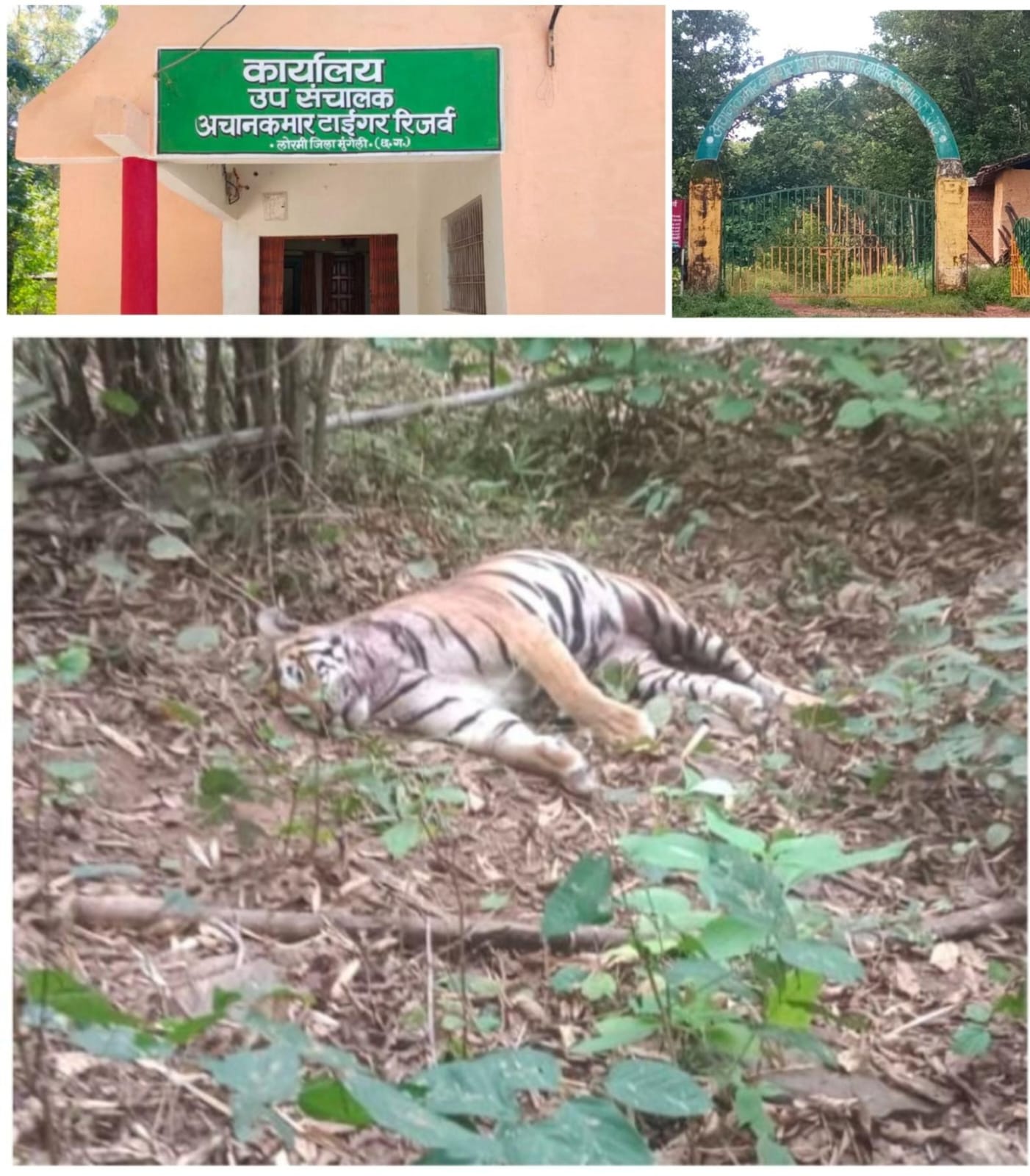ATR management under scrutiny after delayed response to tigress AKT-13’s death.
Official post-mortem cites territorial fight; experts challenge the Department’s explanation.
Conservationists demand better monitoring despite significant government funding for tiger conservation.
Bilaspur/Lormi । The discovery of tigress AKT-13’s carcass in the Lamni core area of Achanakmar Tiger Reserve (ATR) has raised serious concerns about wildlife monitoring and conservation measures. Villagers from Chirhatta near Birarpani first spotted the carcass on January 23, but ATR officials only arrived at the scene two days later. The delay has highlighted inefficiencies in monitoring a critical habitat.
Deputy Director Ganesh UR informed media persons, “The carcass was found between Chirhatta and Birarpani. Preliminary investigations suggest the tigress died due to a territorial fight with male tiger T-200 during mating or over territory disputes.” The post-mortem, conducted under NTCA protocols, revealed bite marks on the neck, a ruptured windpipe, and scratches, pointing to a fatal struggle.
The post-mortem team, led by wildlife veterinarian Dr. P.K. Chandan and assisted by veterinary experts from Mungeli district, confirmed the cause of death as a territorial conflict. NTCA representatives and ATR officials were also present during the procedure.
Field Director Manoj Pandey cited the growing tiger population in ATR as a reason for such incidents. “With an increase in tiger numbers, territorial disputes are inevitable. We are evaluating our monitoring systems to prevent such occurrences in the future,” Pandey stated.
Despite these explanations, the ATR’s response has drawn sharp criticism. Villagers, who first discovered the carcass, claimed they faced difficulties in alerting ATR officials, whose phones were reportedly switched off. Conservationists argue that the delayed response, coupled with the absence of advanced monitoring tools, undermines the effectiveness of ATR’s wildlife management.
Wildlife conservationist Nitin Singhvi expressed skepticism over the Department’s explanation. “The claim that AKT-13 died due to a fight with T-200 over mating is implausible. Tigers are induced ovulators, meaning tigresses only mate during estrus. If AKT-13 were in estrus, she would not have fought T-200 but would have accepted him as a mate. Additionally, overlapping territories between tigers and tigresses rarely result in conflicts. The Department needs to provide a more credible explanation,” Singhvi asserted.
Elaborating further, Singhvi explained that tigers follow a structured breeding pattern. “Tigresses in estrus signal their readiness to mate through scent marking and vocal cues, attracting males. Mating outside this cycle is rare and often leads to aggression. The official narrative doesn’t align with this natural behavior,” he added.
The incident has also spotlighted ATR’s use of conservation funds. Despite crores spent annually on tiger protection, the reserve lacks robust tracking tools like GPS collars. Conservationists have emphasized the need for real-time monitoring systems to track tiger movements and ensure their safety.
Singhvi urged immediate reforms, stating, “The death of tigress AKT-13 should serve as a wake-up call. ATR authorities must prioritize proactive measures to prevent such incidents. Enhanced monitoring systems, efficient response protocols, and advanced technologies are vital for the safety of ATR’s tigers.”
The National Tiger Conservation Authority (NTCA) guidelines were followed for the tigress’s disposal after the post-mortem. ATR officials, however, remain under pressure to address growing concerns about tiger safety in the reserve.
As ATR management scrambles to contain the fallout, the death of AKT-13 has become a rallying point for stronger conservation practices. Conservationists have called for a comprehensive review of ATR’s tiger conservation strategies, emphasizing the need for effective implementation to safeguard these iconic predators.

Adani’s green push: Over 27,000 saplings planted in PEKB and PCB coalfields on World Environment Day
Adani-backed PEKB and PCB coal mines see mass plantation of...
Read More











